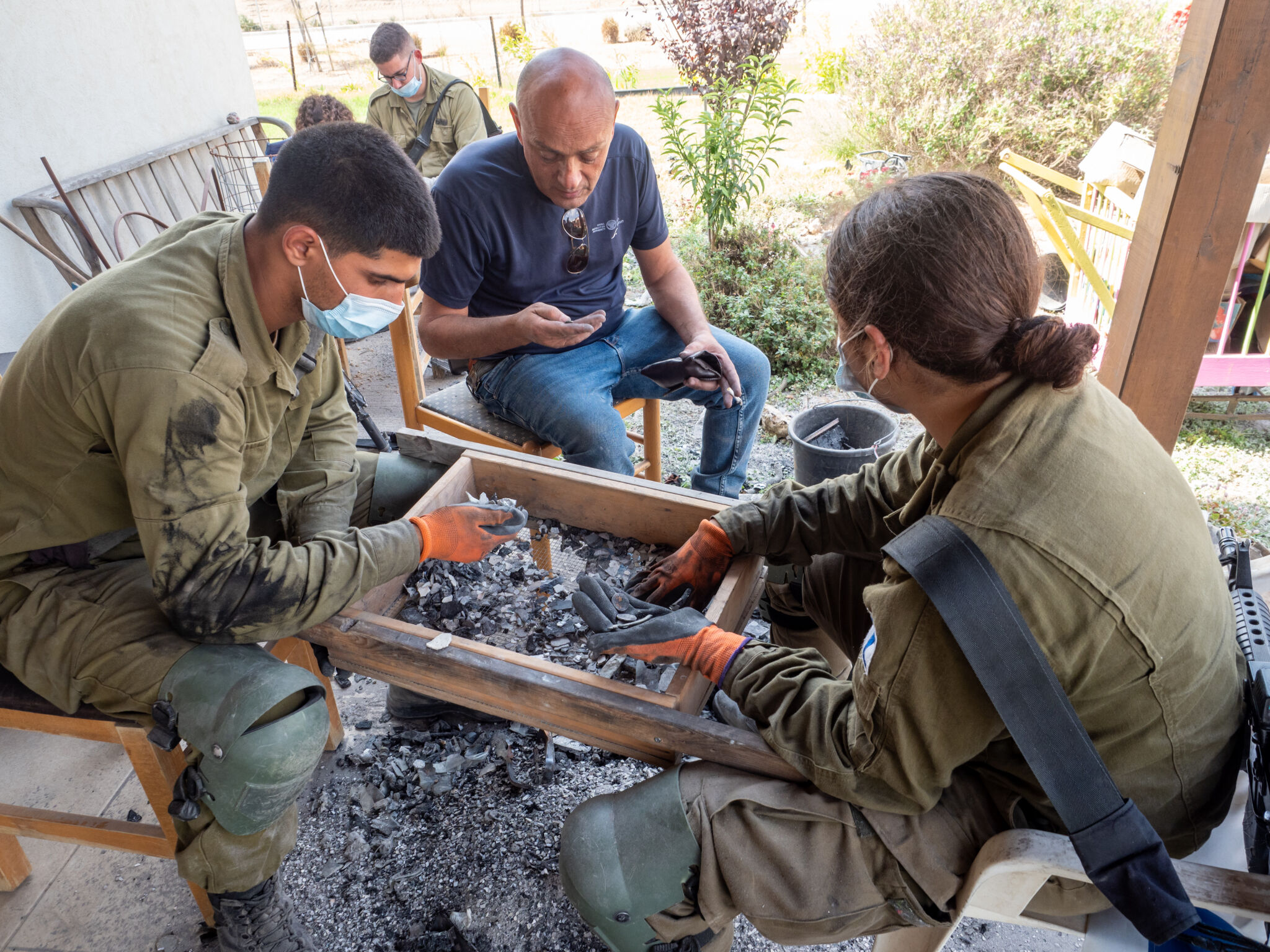The October 7 Hamas massacre and the ensuing war have had a profound impact on the lives of every Israeli. The absolute destruction wrought by terrorists on that fateful day has required the skill set of a particular group of individuals—archaeologists. Many spend their lives uncovering lost and destroyed civilizations and sites from thousands of years ago. Tragically, their skills have been necessarily enlisted to help retrieve human remains and to understand the full scope of the modern holocaust that was October 7.
According to a statement put out by the Israel Antiquities Authority (iaa) last week:
Israel Antiquities Authority archaeologists, enlisted to help the Israel Defense Forces [idf] efforts to identify remains in burnt houses in the Israeli communities around Gaza, have so far uncovered remains of at least 10 deceased persons.
The archaeologists were called to the challenging task by Col. Yossi Cohen of the Gaza Division of the idf, directed by Maj. Rabbi Shlomo Hazut, Rabbi of the Gaza Division of the idf. They have been employing the techniques and the knowledge they have acquired in archaeological excavations of burnt and destroyed ancient sites, and have discovered many signs of human remains, in the hope that they will provide certain evidence for the families regarding the fate of their loved ones.
The archaeologists themselves said in a joint statement: “The archaeological methods employed at ancient sites are similar to the methods applied here, but it is one thing to expose 2,000-year-old destruction remains, and quite another thing—heart-rending and unfathomable—to carry out the present task searching for evidence of our sisters and brothers in the communities.”

The sheer scale of destruction has required specialists from numerous disciplines to help both in gathering and identifying the remains. This effort was highlighted by the Daily Mail, writing, “All those who question the unimaginable savagery of the Hamas attack against Israel must read the words of these forensic scientists struggling to identify the 297 bodies so brutalized as to be unrecognizable.”
Prof. Aren Maeir, excavator of the nearby Tell es-Safi (biblical Gath), visited the devastated communities, writing about what he saw from the perspective of “a concerned and shocked Israeli—a son, a husband, a father and a grandfather, a human being trying to understand how such horrific things could have happened, and as an archaeologist, who usually sees evidence of violence and death with centuries or millennia filtering it, ‘softening’ the blow.” He described the scenes he saw in the kibbutzim:
In some of the houses, the destruction was so massive that the occupants’ remains were reduced to ashes and could not be identified. To assist in identifying the remains of all the murdered people, colleagues of mine from the Israel Antiquities Authority stepped in, using archaeological techniques to find remains of those murdered. I had a chance to see my brave colleagues conducting this indescribably hard and gut-wrenching work, at times done under enemy fire! While I have often excavated remains of ancients who suffered death and destruction, here this was carried out on people who had been murdered less than three weeks ago. The archaeologists sifting through the remains in these houses managed to find bones and teeth of some of the deceased, which will enable identification—and burial. A new type of archaeology has been born—the archaeology of terrorism ….
[V]isiting these locations, at which such murderous, barbaric attacks occurred, seeing the horrific evidence of the murderous rampage—and blood and brains, the destruction and burning—I will never be the same—in any of the “hats” mentioned above.
(You can read his article, titled “‘Yea, Though I Walk Through the Valley of the Shadow of Death’: Visiting Sites of the October 7 Massacres,” on his excavation website here.)
Eli Eskosido, director of the iaa, stated: “Taking into account all the difficulty and the emotional challenges involved, our hope is that we can contribute to the certain identification for as many as possible families.” The iaa is also offering assistance by providing educational and respite programs for the many families that have been evacuated and are sheltering in hotels throughout the country.
“I salute our archaeologists for their immediate agreement—by no means to be taken for granted—to take part in this difficult task,” said Eskosido. “It is an honor and a great responsibility that they are carrying out with great respect.”
Enlisting the aid of archaeologists in identifying remains shows the extent of Hamas’s destruction and is a reminder of the horrors that mankind is capable of in both ancient and modern history.

